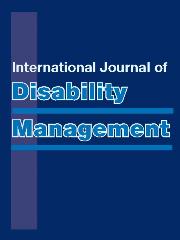Article contents
What Are the Pathways Linking the Disclosure of a Degenerative Eye Condition in the Workplace and Wellbeing? A Mixed Methods Approach
Published online by Cambridge University Press: 04 November 2016
Abstract
While much is known about the pathways linking workplace disclosure of a stigmatised identity and negative wellbeing outcomes, little is known about the pathways to positive wellbeing outcomes. Using survey and interview data three pathways were investigated among the population of individuals with degenerative eye conditions: the alleviation of inhibition (psychological), social support (social), and the use of assistive technology (physical). The findings suggest that the psychological pathway is most prominent. The alternative pathways are only partially exhibited in the interview data. These findings can assist policymakers nuance policy aimed at enhancing labour market participation of individuals with disabilities.
Information
- Type
- Articles
- Information
- Copyright
- Copyright © The Author(s) 2016
References
- 2
- Cited by

